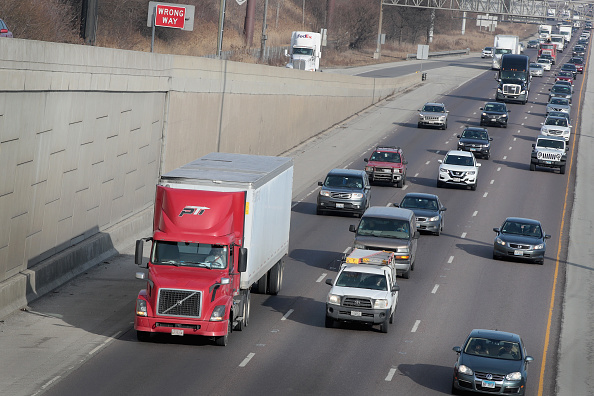The National Shippers Strategic Transportation Council (NASSTRAC) wants Congress to know that its members vote, and the group gathered its people on Capitol Hill earlier this month to deliver that message to lawmakers.
Michael Regan is chief relationship officer with the logistics services company Tranzact Technologies and advocacy chair for NASSTRAC. He directed the grass-roots effort as part of NASSTRAC’s Spring Event, June 10-11 in Washington. Two dozen members divided into teams and met with elected officials and staff to convey the group’s message on transportation issues.
Topping the group’s agenda was the need for transportation infrastructure investment, and finding a way to pay for it. Last year, the White House proposed a $1.5 trillion infrastructure initiative, including non-transportation projects such as clean drinking water, but momentum on that has stalled.
The federal fuel tax that funds transportation projects has not been raised since 1993, while the cost of building and maintaining our roads and bridges has increased. As a result, funding has not kept up with needs, leading to a backlog of repair and improvement projects and mounting congestion. In a report released in April, the American Road & Transportation Builders Association identified more than 47,000 structurally deficient bridges around the country.
Regan says the funding lag can be attributed to what he calls “The Ghost of 1993,” when reaction to the gas tax increase enacted that year led to a wholesale turnover in the House and Senate in the 1994 election. Now, Regan says, lawmakers are afraid of a similar backlash if they vote to increase the tax again.
He also points out that the 18 cents-per-gallon gas tax is becoming less effective as the nation moves away from carbon-based fuels. More fuel-efficient vehicles, including hybrids and electric vehicles, mean drivers are buying less gasoline and diesel per mile driven, and therefore are paying less toward maintenance of the roads and bridges they travel.
“What you have is basically a deeply flawed system with no one willing to step up to the plate and say this is how we are going to fund an infrastructure bill,” Regan said.
Another item on the NASSTRAC agenda is allowing for longer twin-trailer rigs on the highways. The group is pushing for increasing the trailer length limit from 28 to 33 feet.
“People like Old Dominion, FedEx, UPS and virtually every large LTL (less than truck load) carrier could tell you how valuable that is, not only for them but for shippers. We think it’s a number that can probably save $20-25 billion just by increasing the capacity of those pup trailers to 33 feet,” Regan said
A third important issue for NASSTRAC is the establishment of a Motor Carrier Safety & Selection Standard (MCSS), so that interstate shipments won’t be subject to a patchwork of sometimes conflicting state carrier standards.
But perhaps the most important goal of the Capitol Hill visits was giving NASSTRAC visibility to the legislators, to remind them that NASSTRAC members are willing to work to promote federal initiatives important to their businesses.
“We have to attack the ‘freight don’t vote’ syndrome,” Regan said.
Regan said he’s confident even a small group can make its voice heard in Washington. He said former Transportation Secretary Norman Mineta once pointed out to him that the group that advocated for protecting the endangered spotted owl was less than 100 strong.
“They were very organized and they were very effective and they had a very consequential impact,” Regan said. “So, we like to emphasize to people that we think it’s important to share why this infrastructure bill and these other initiatives are so important.”
